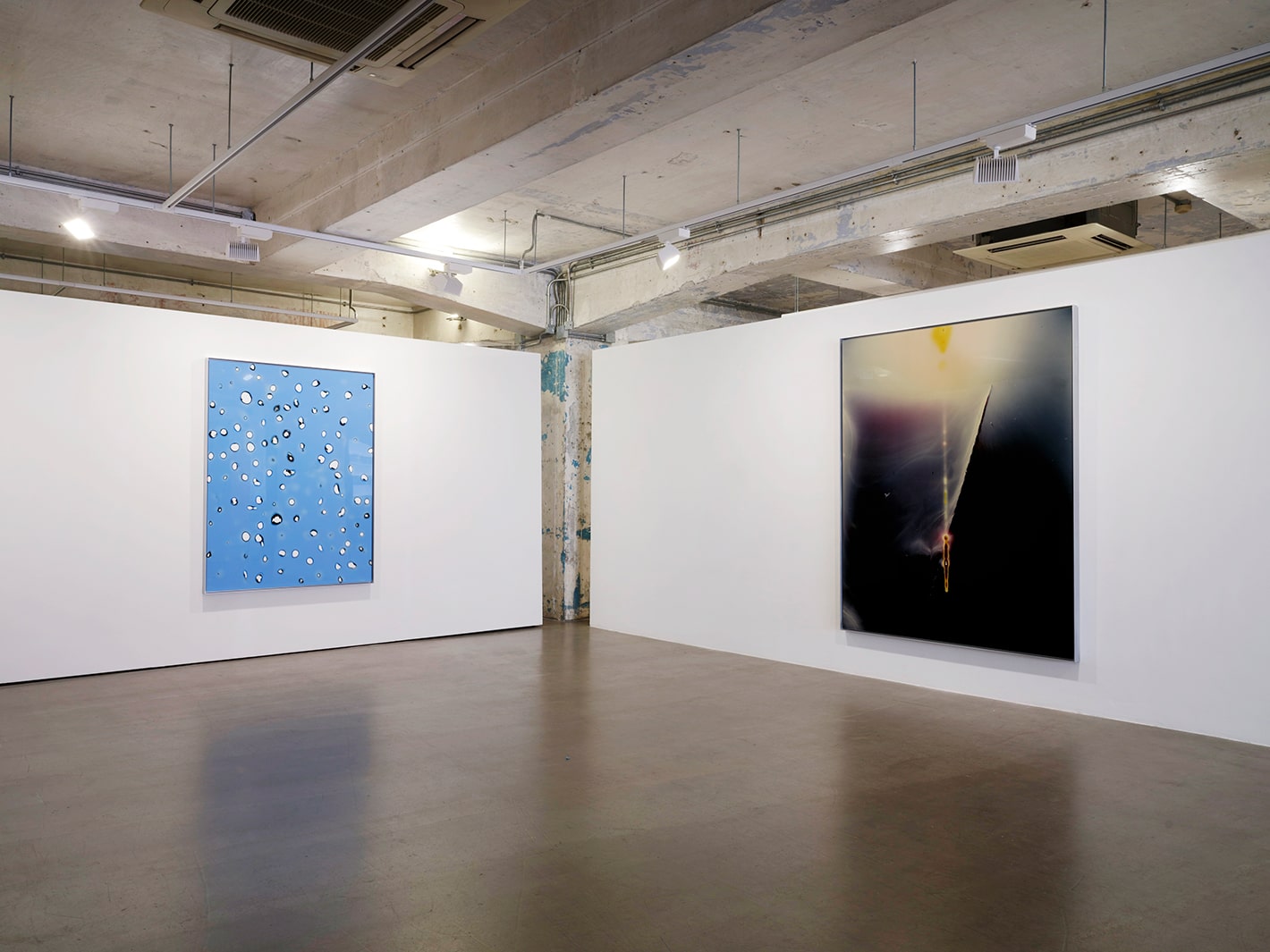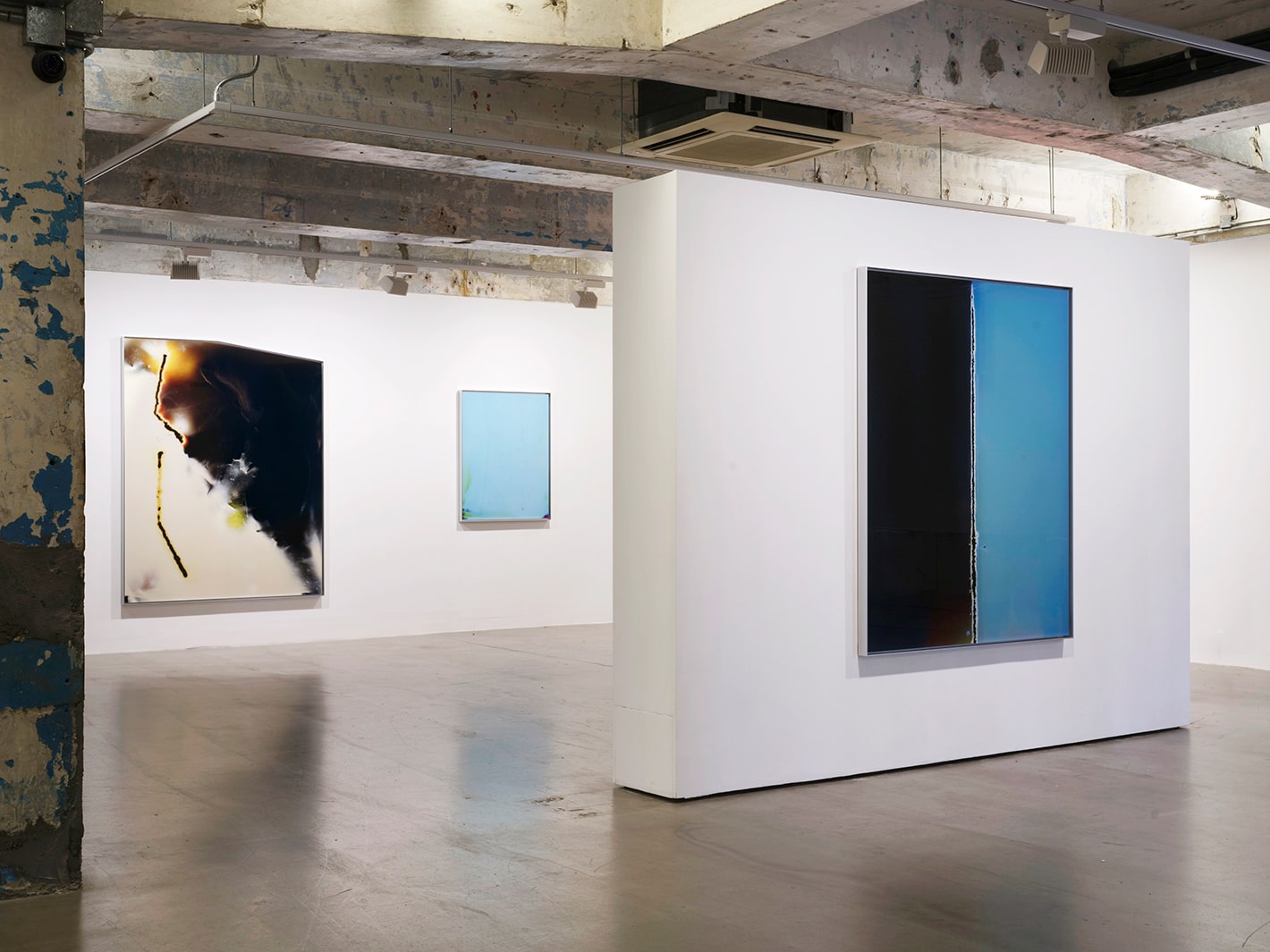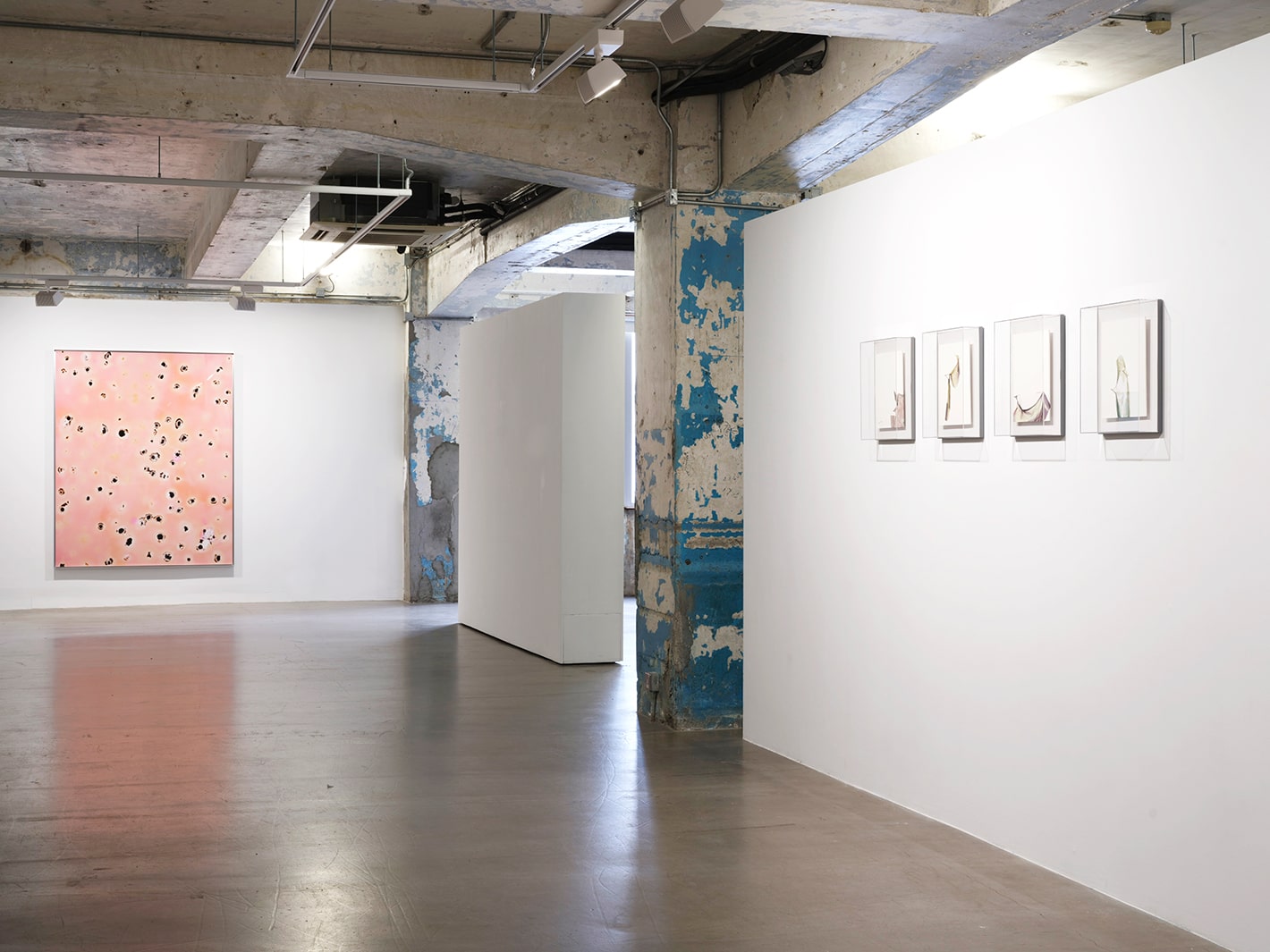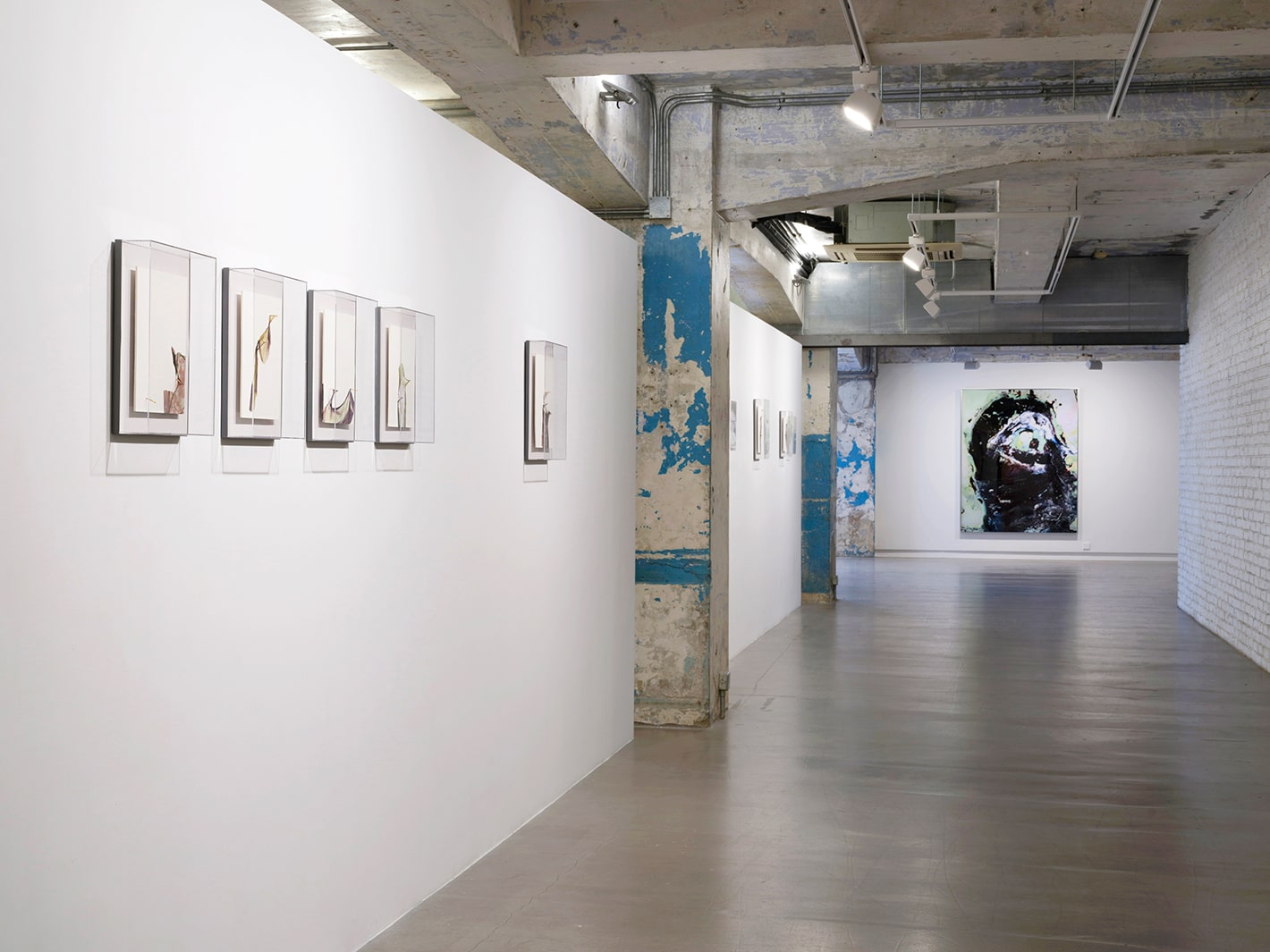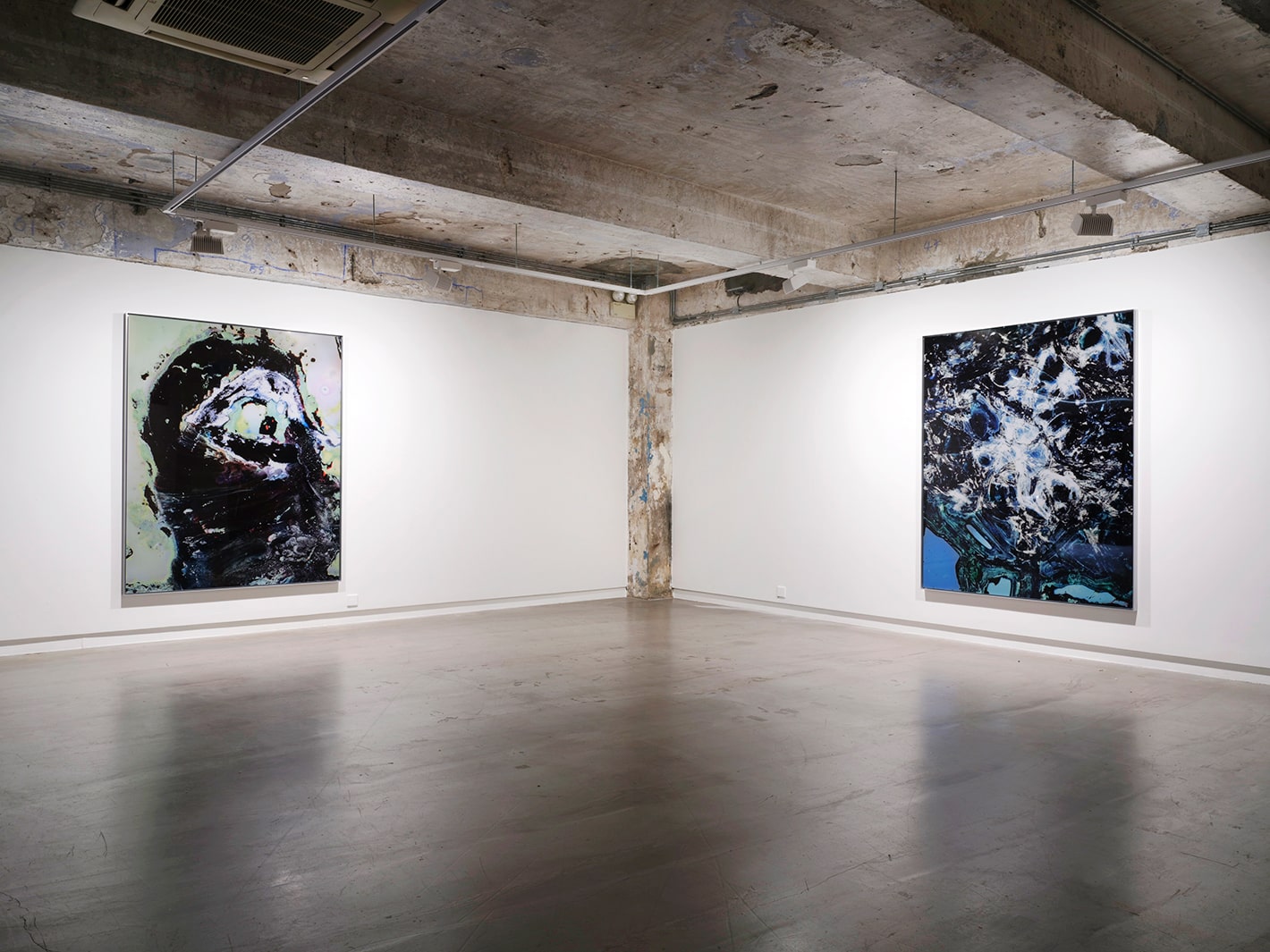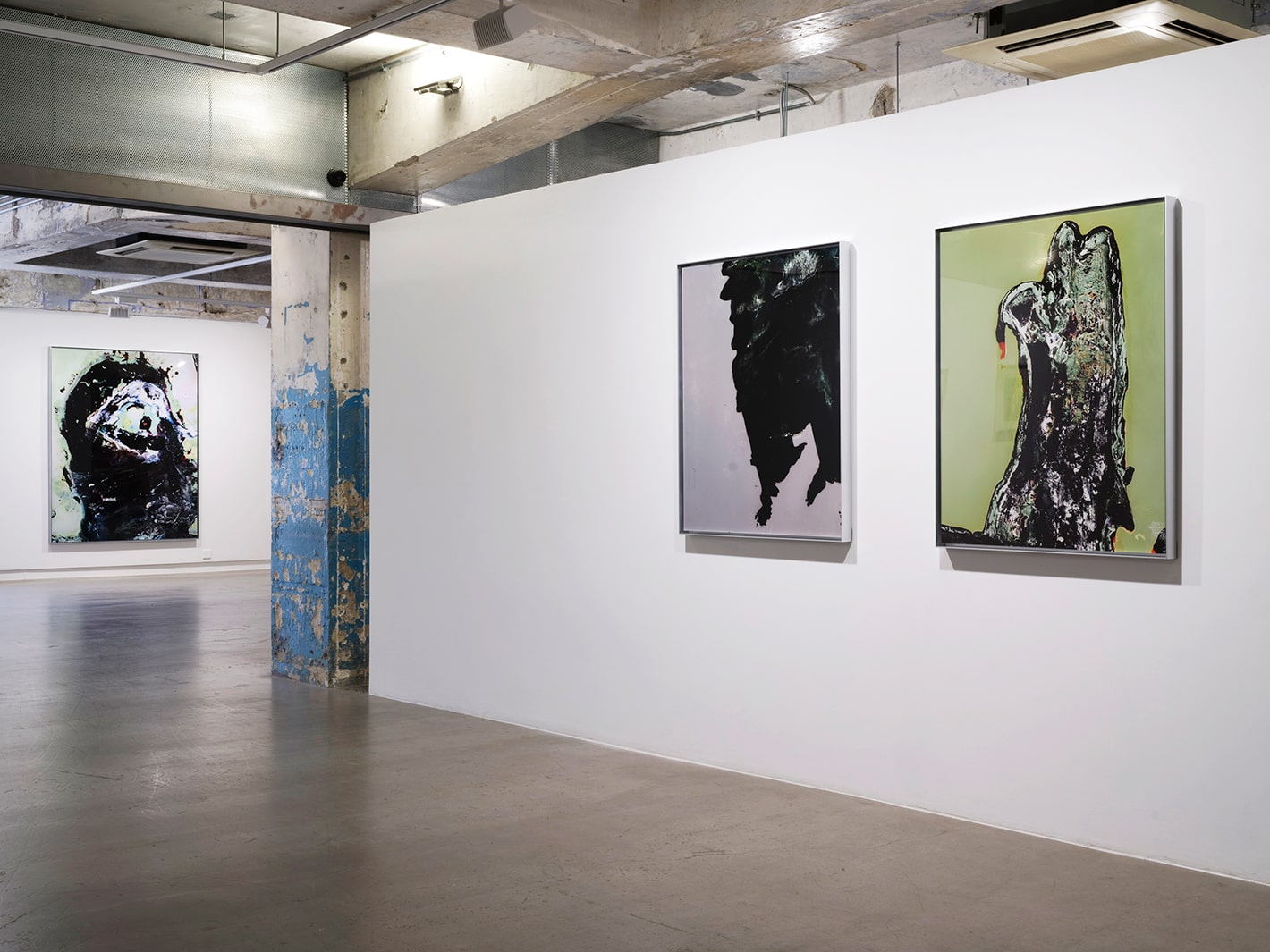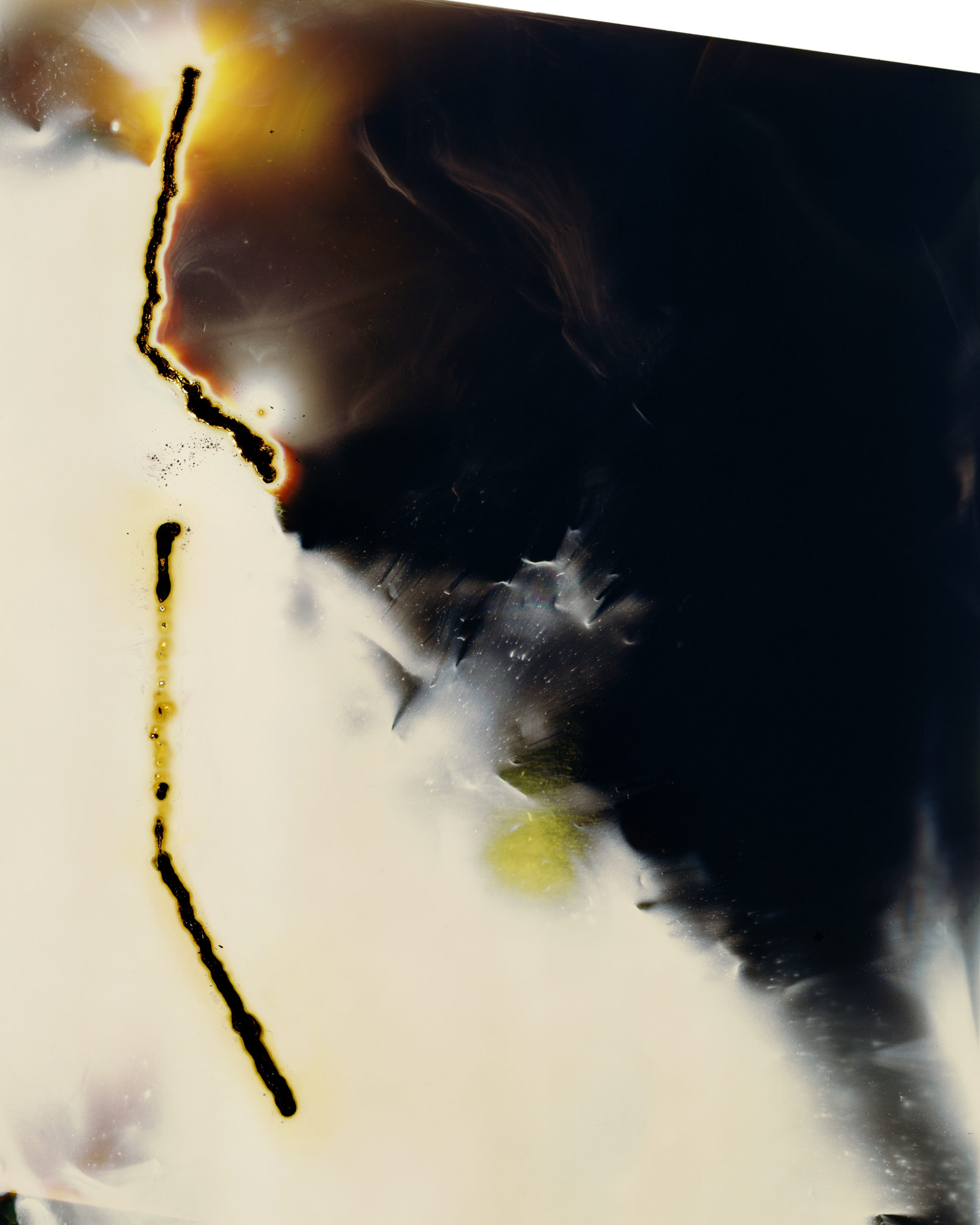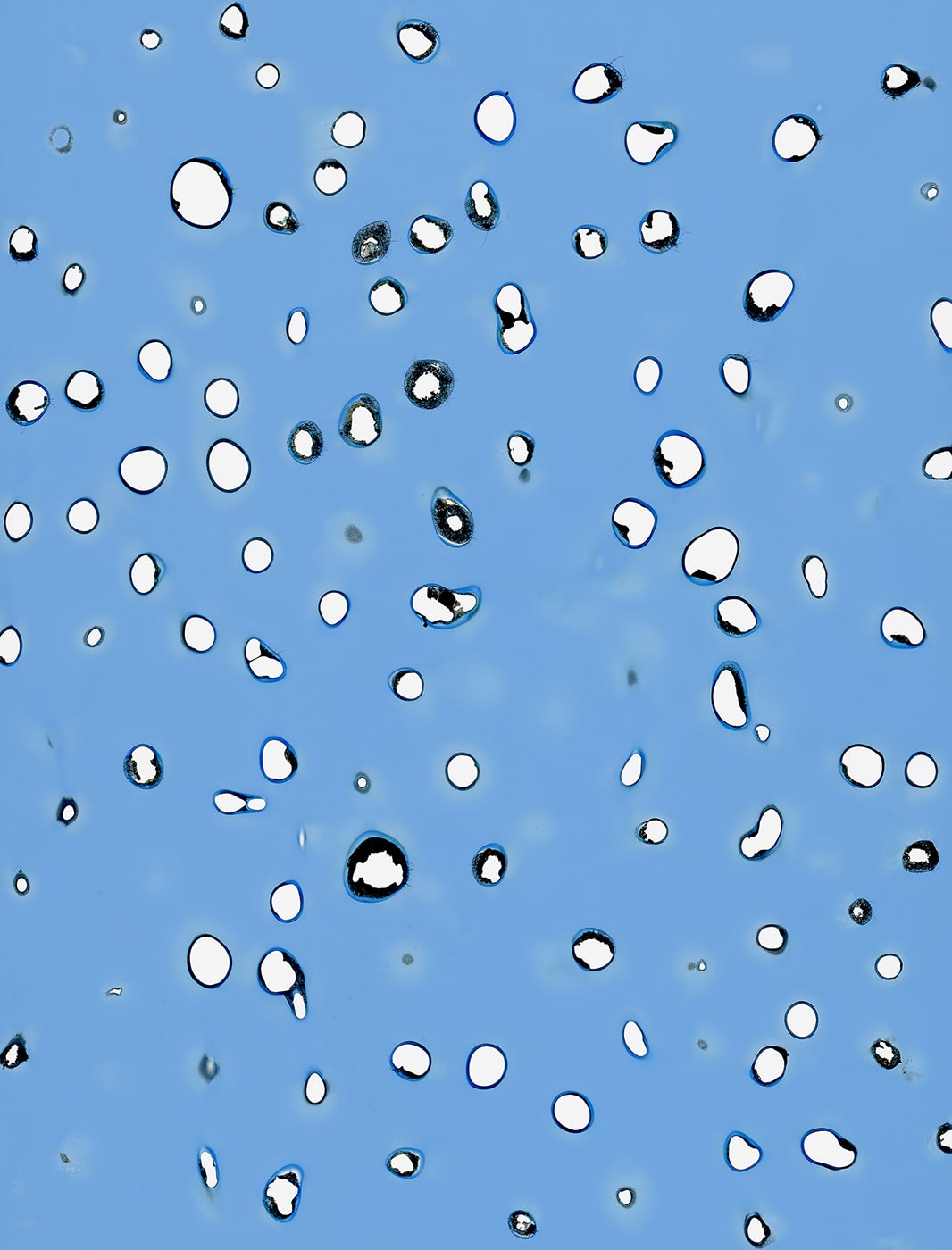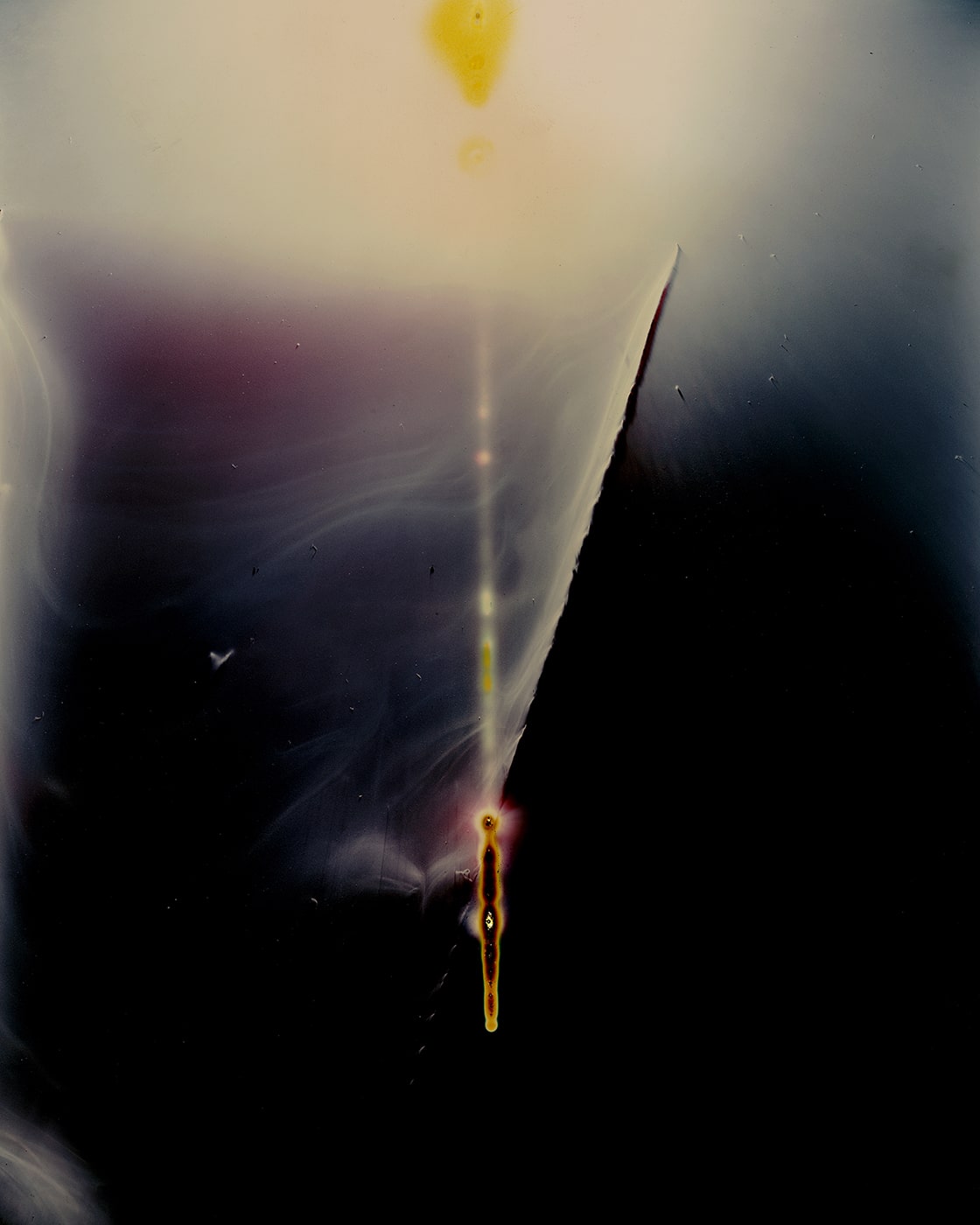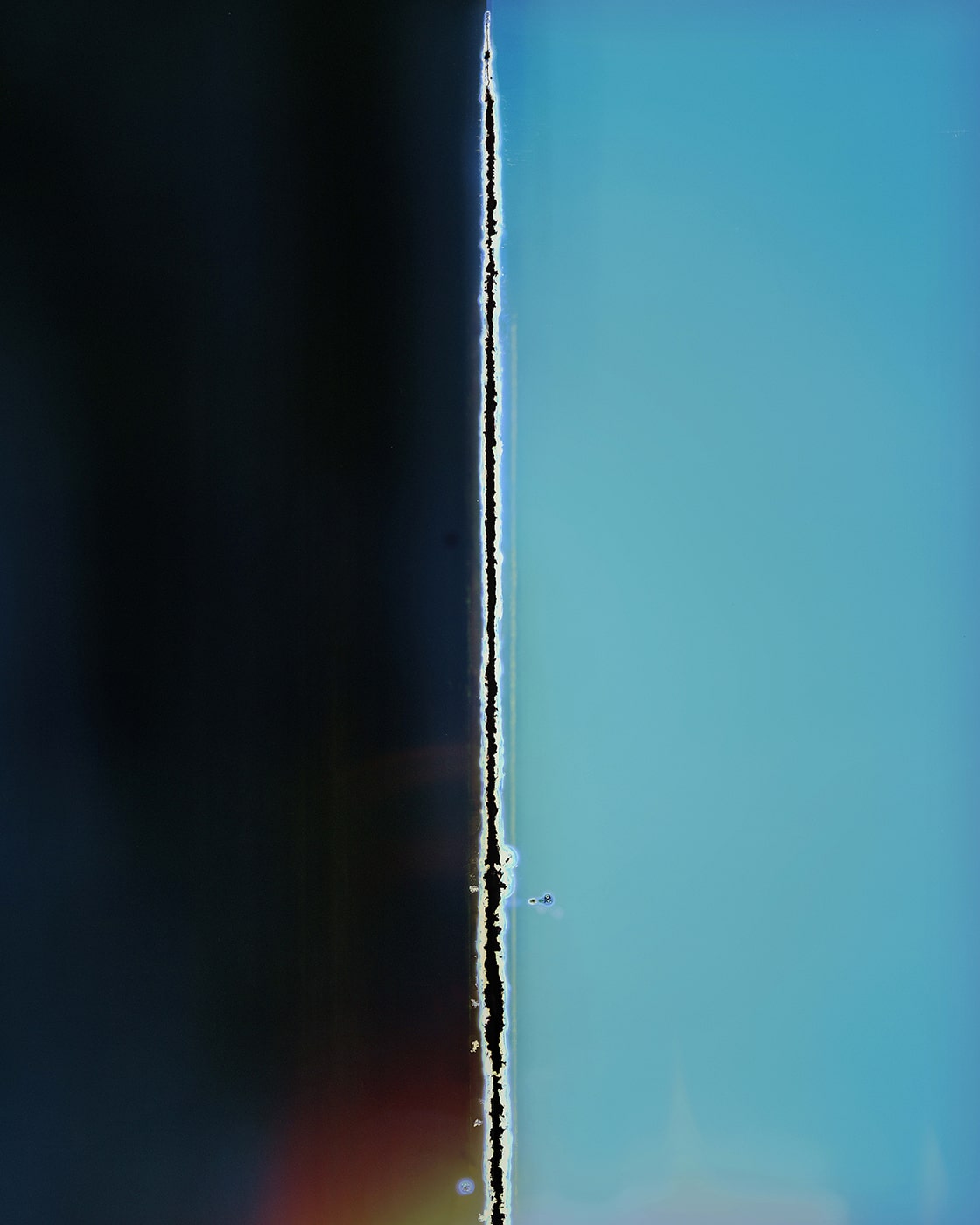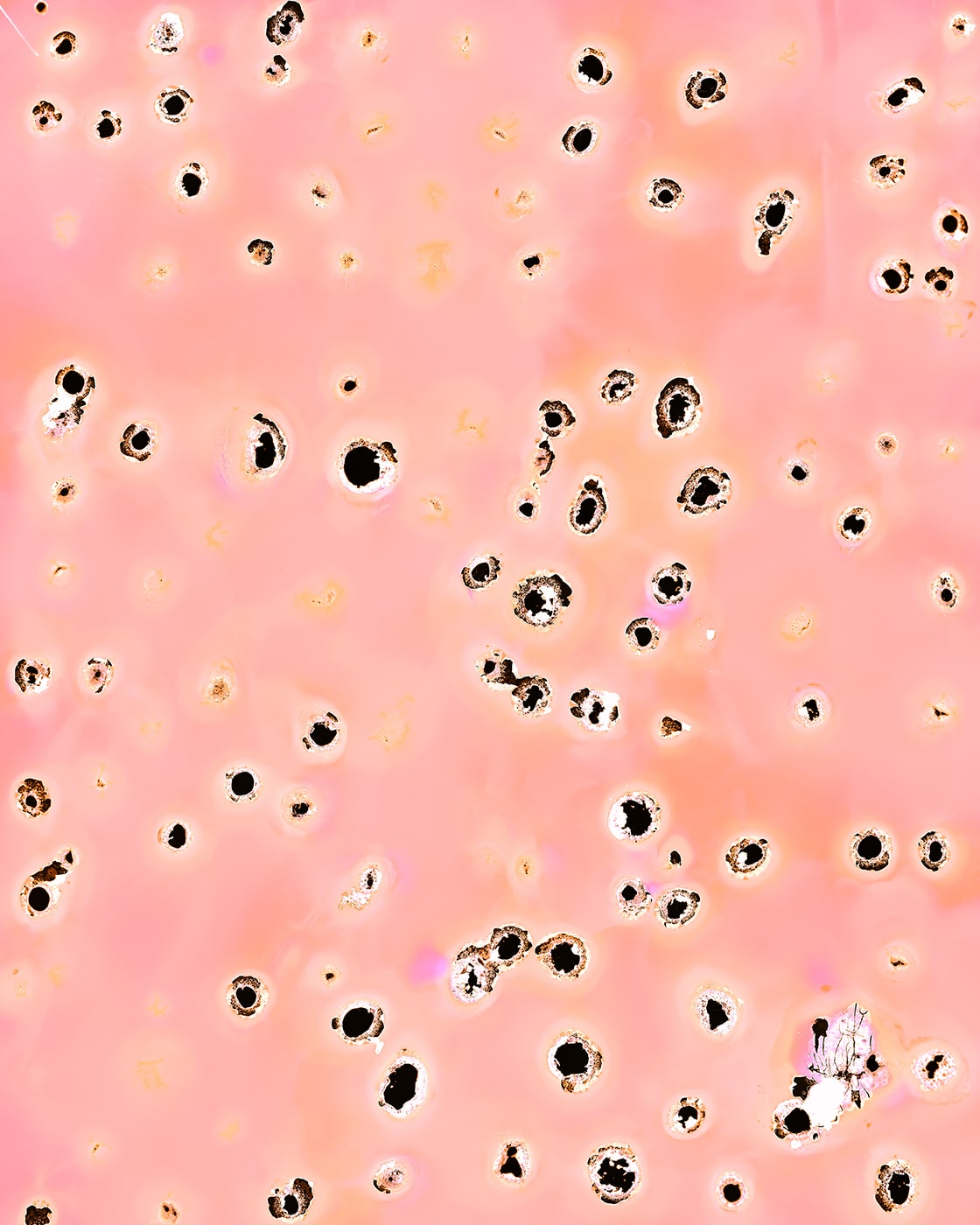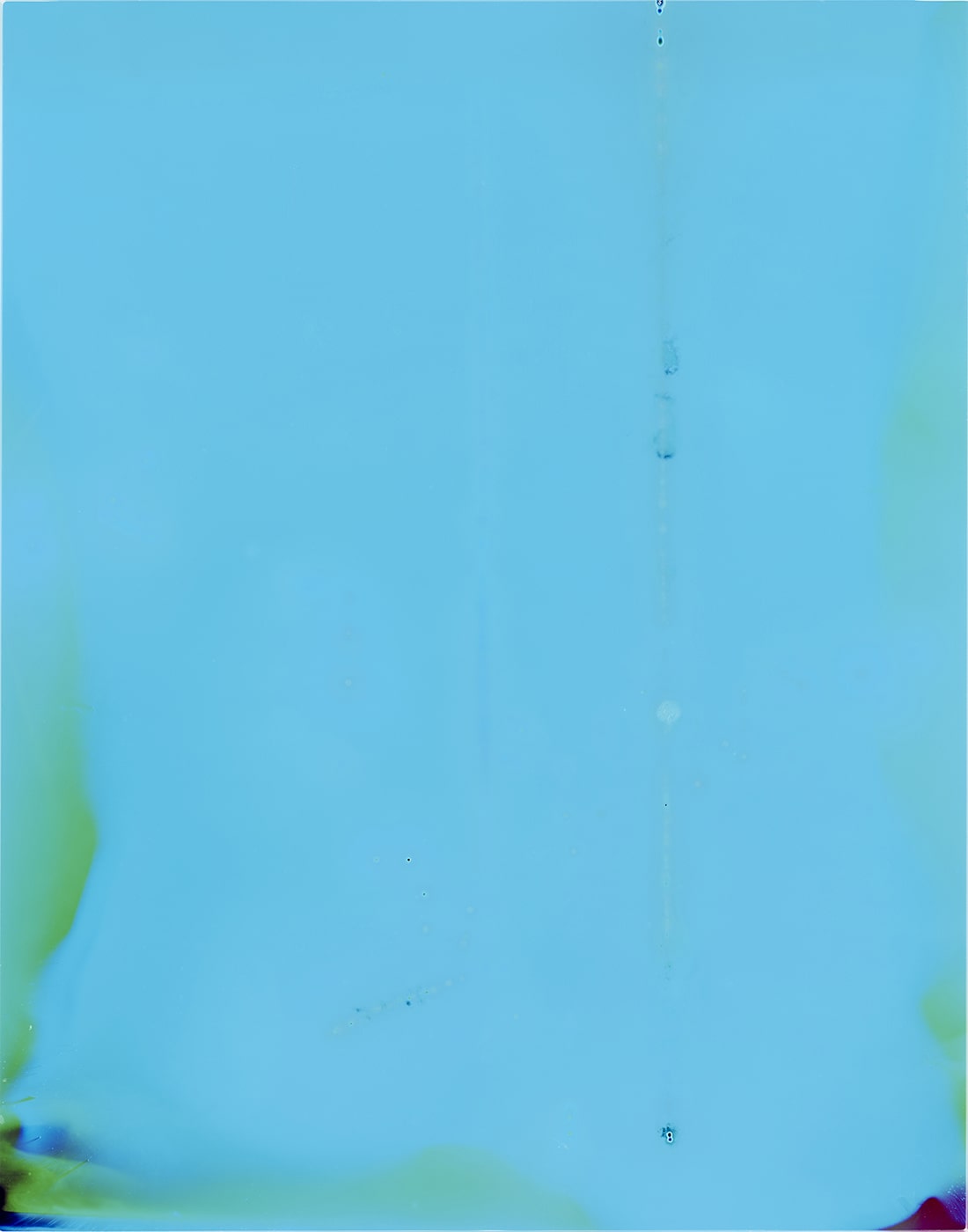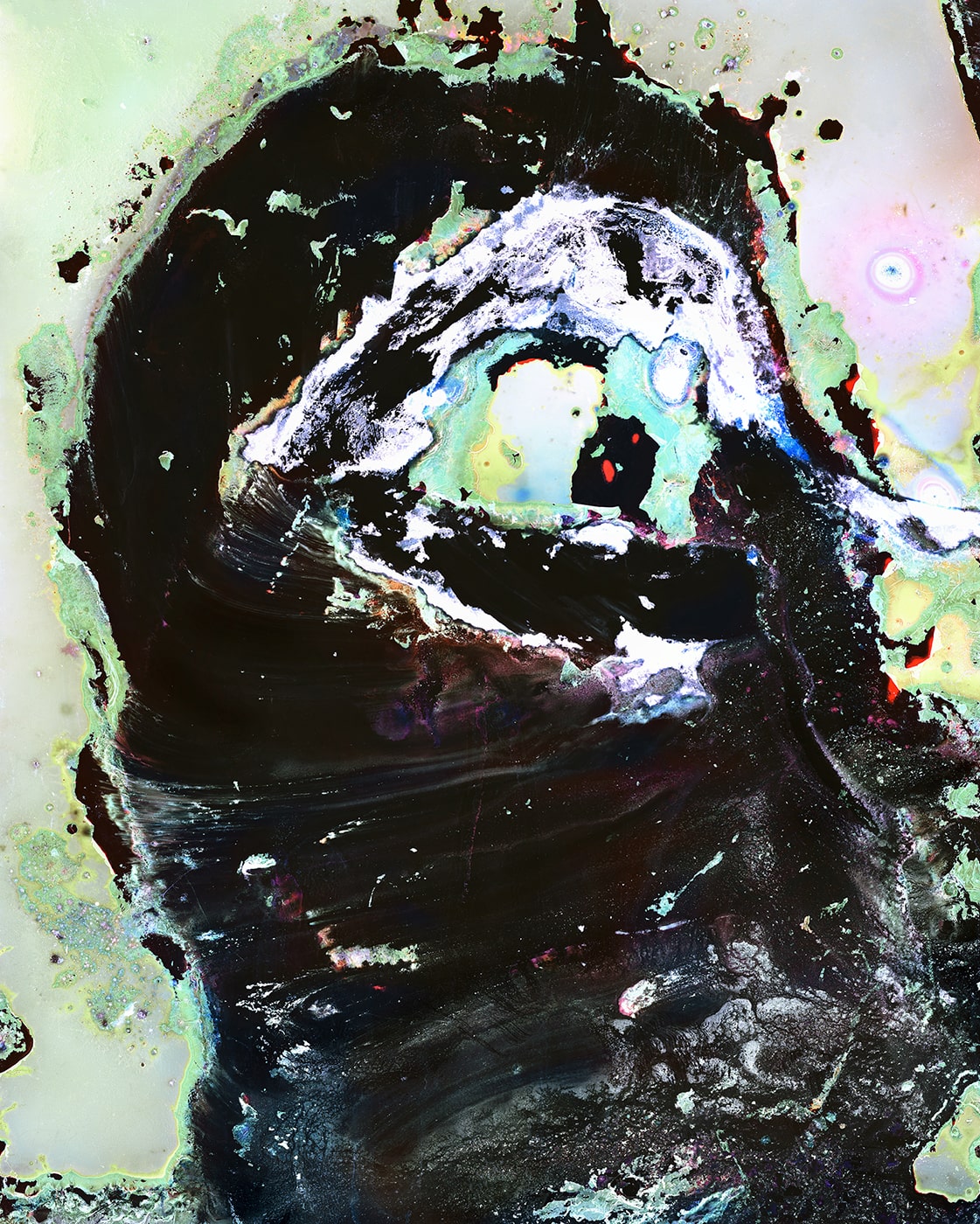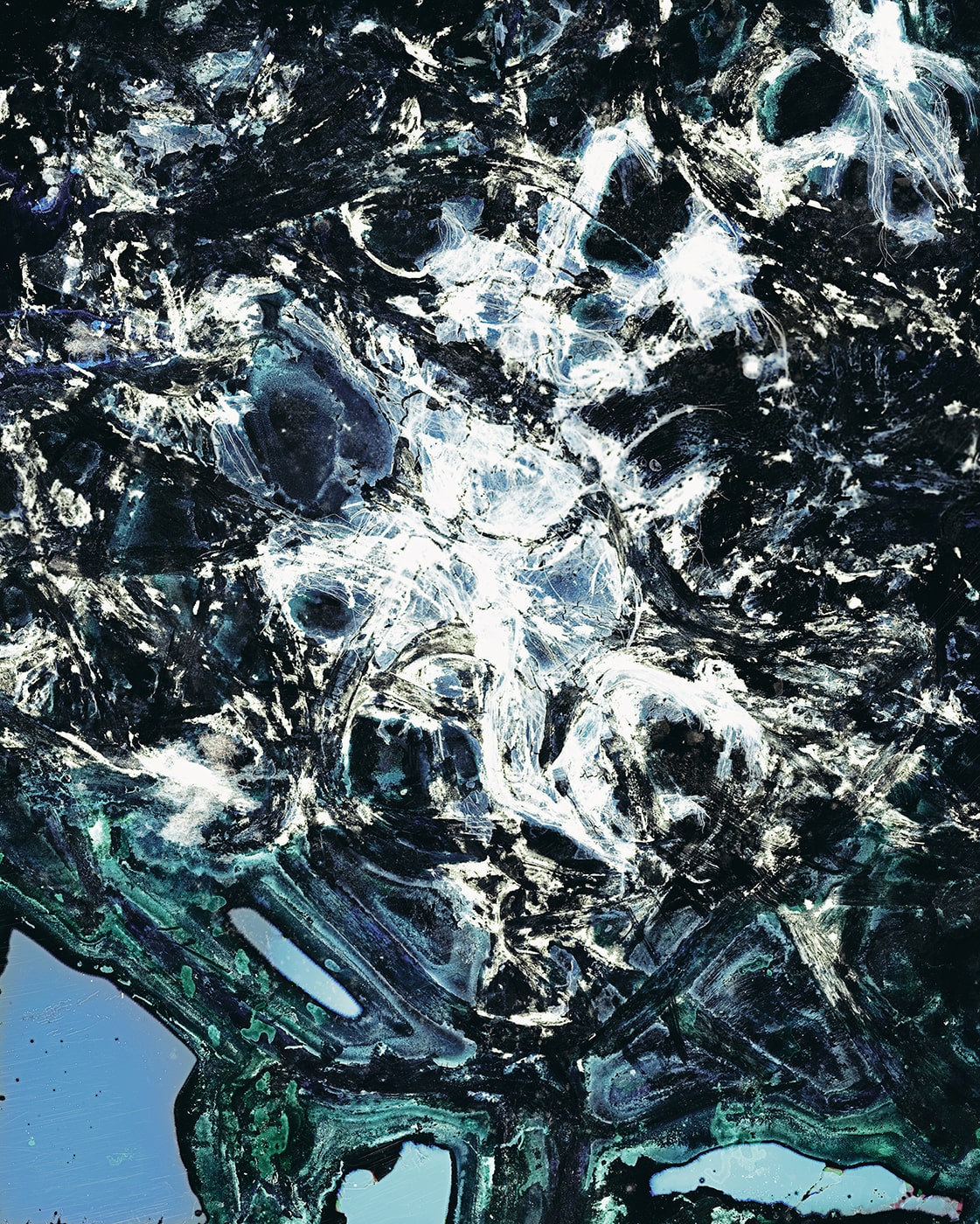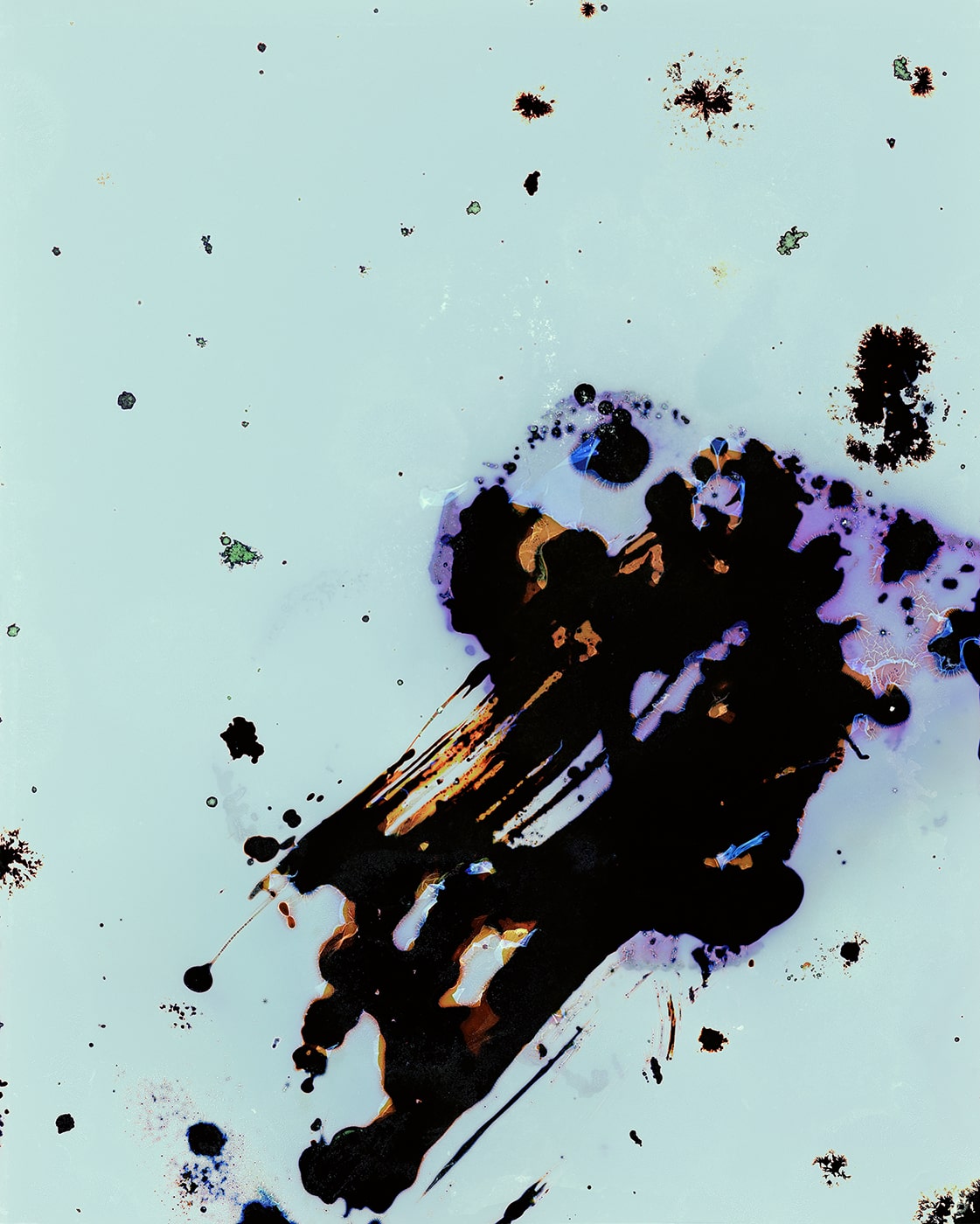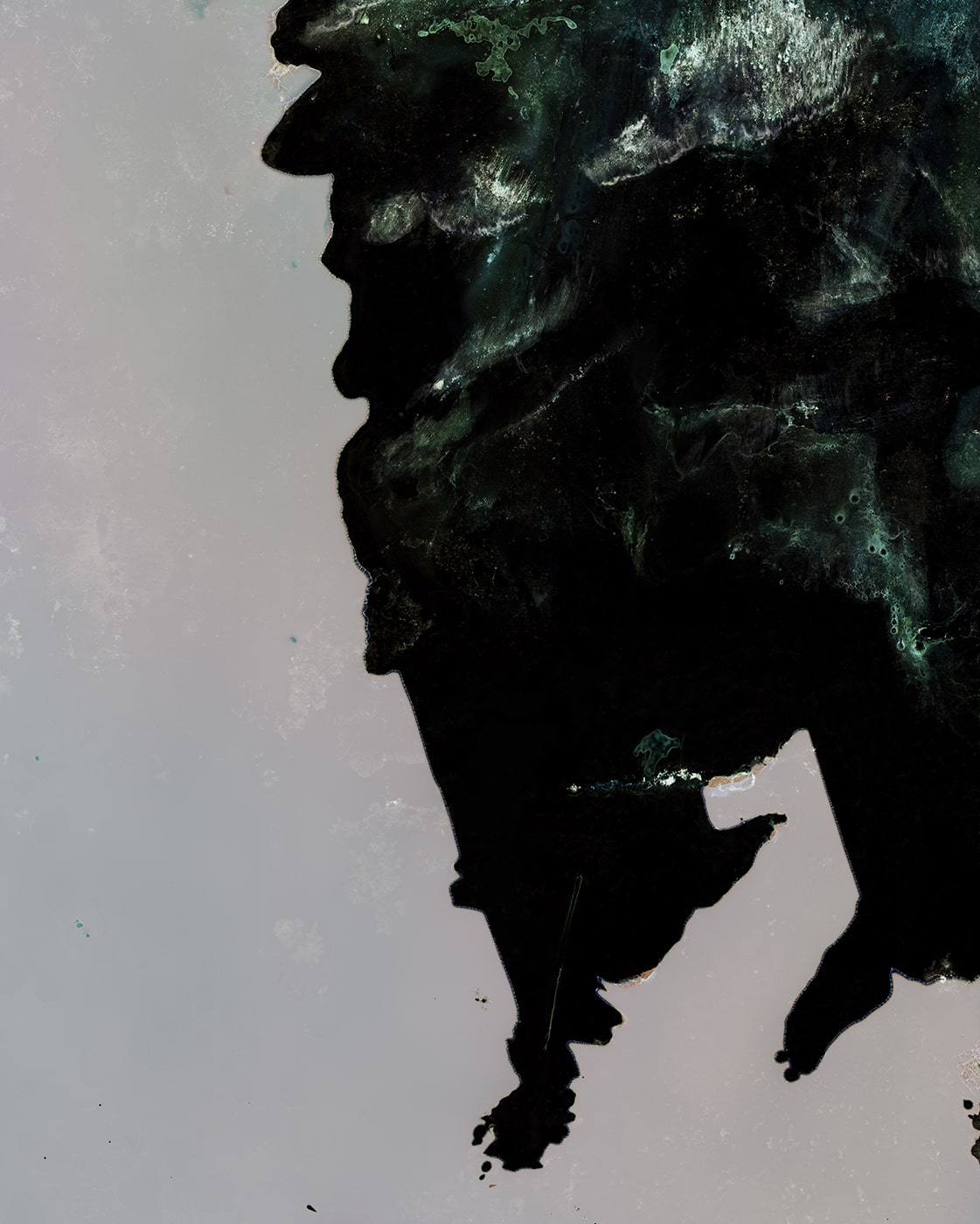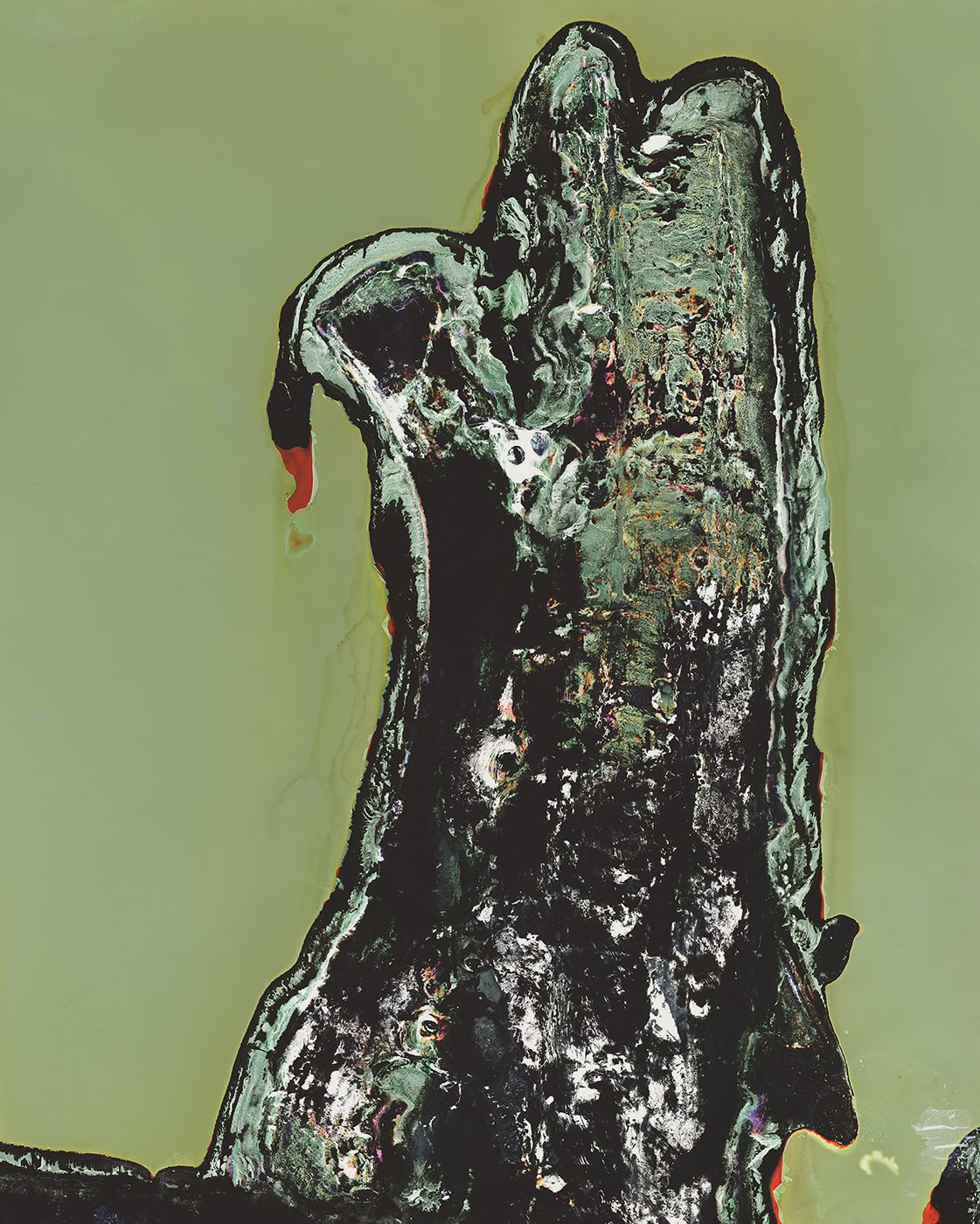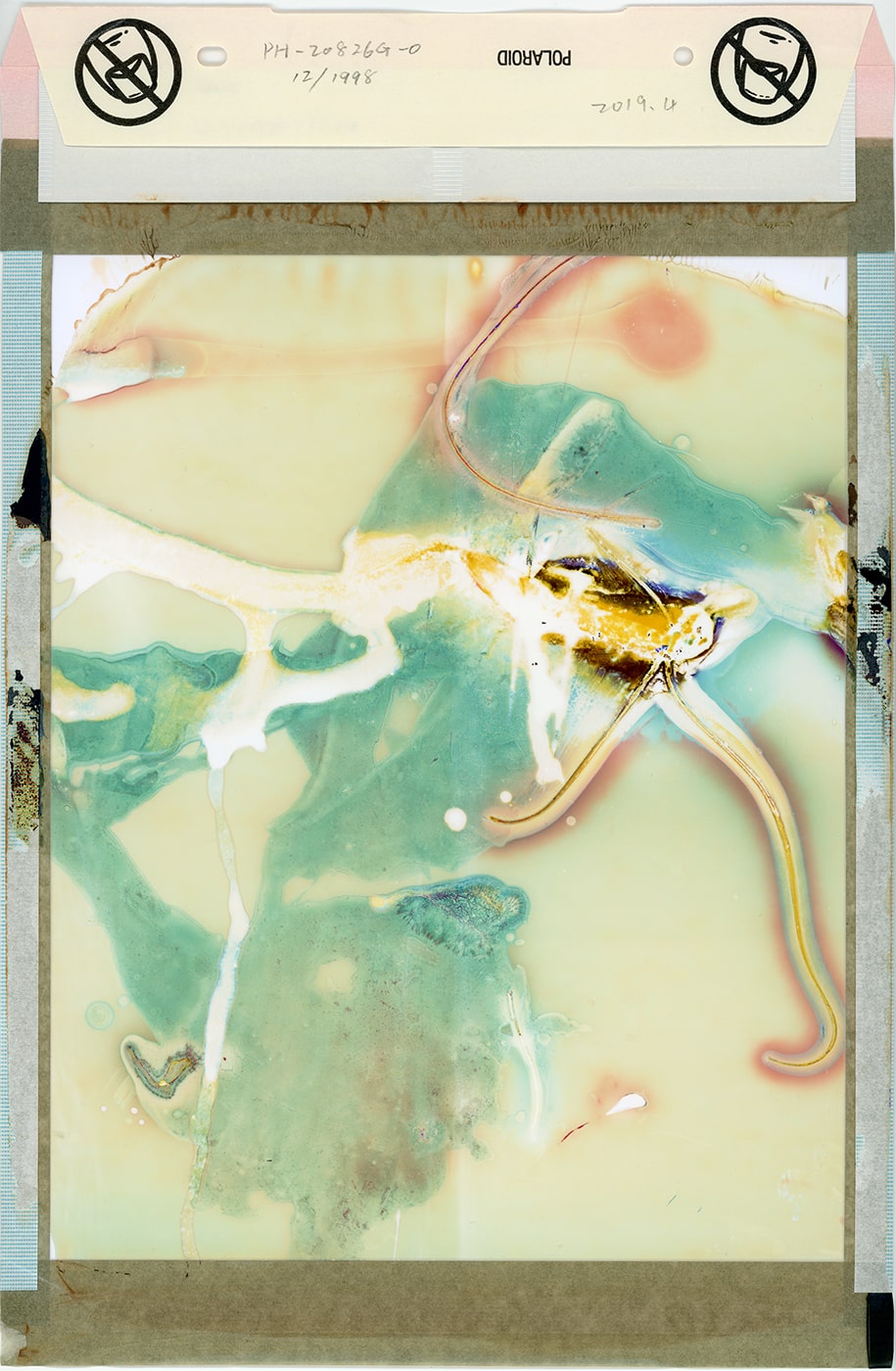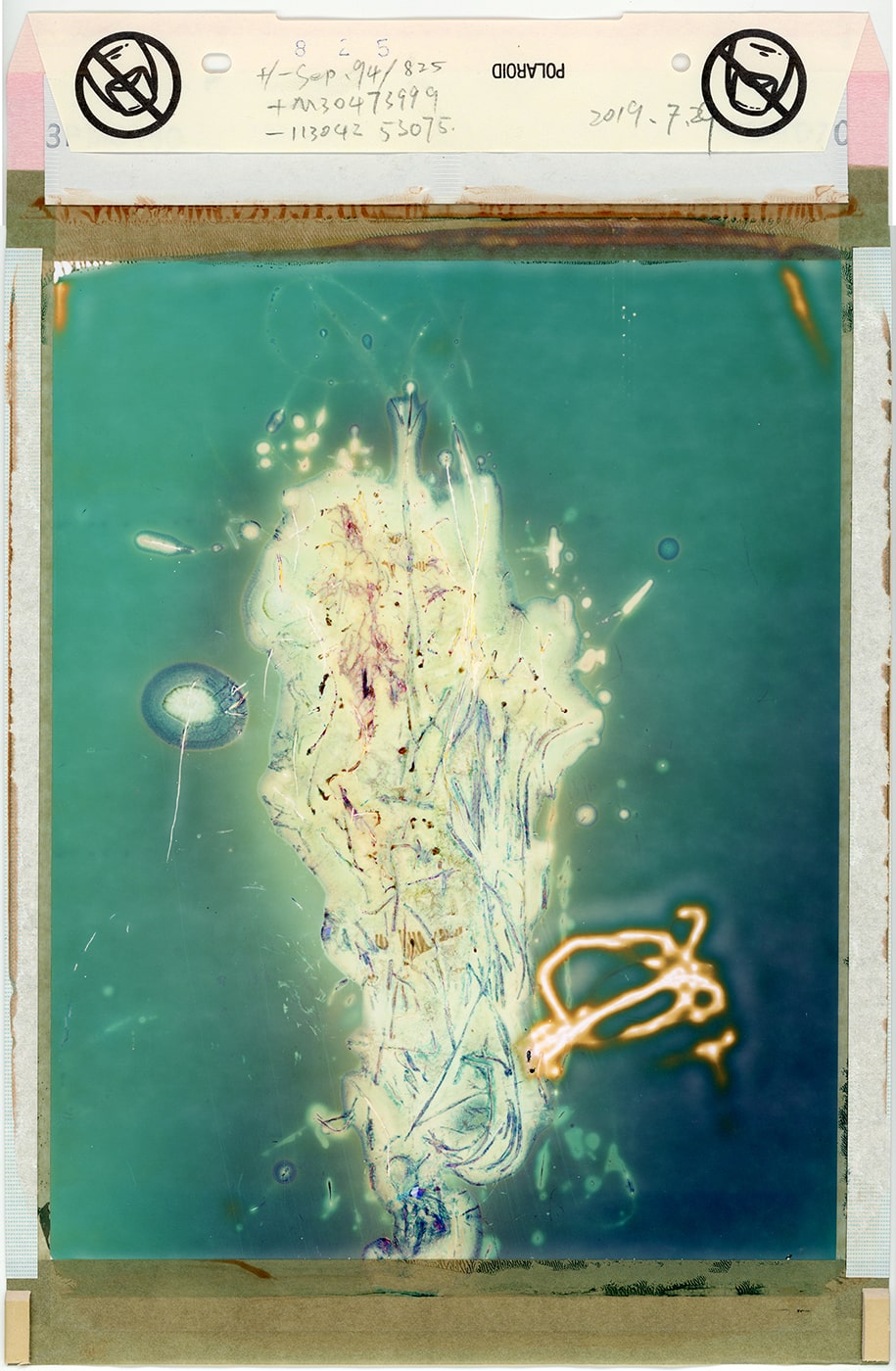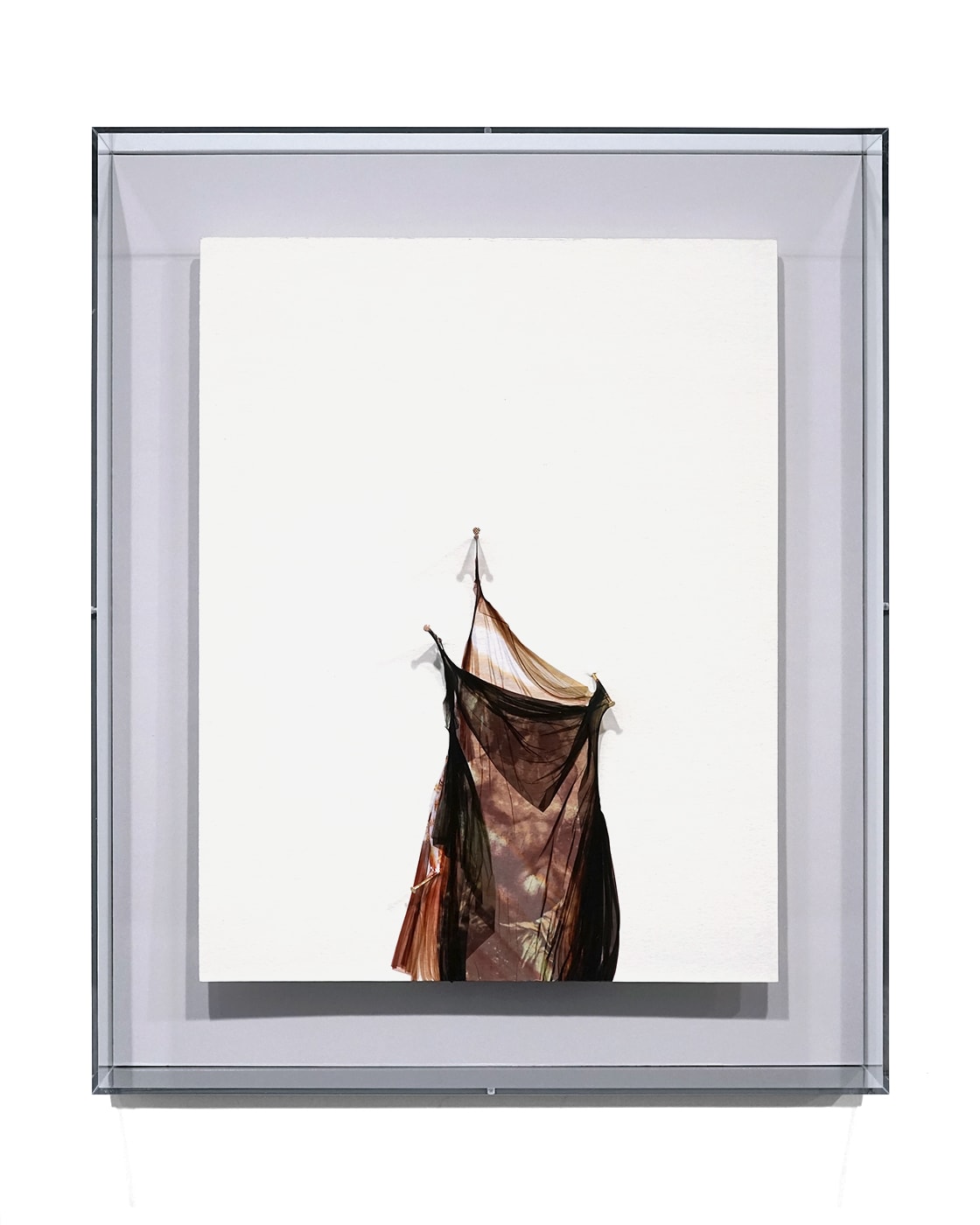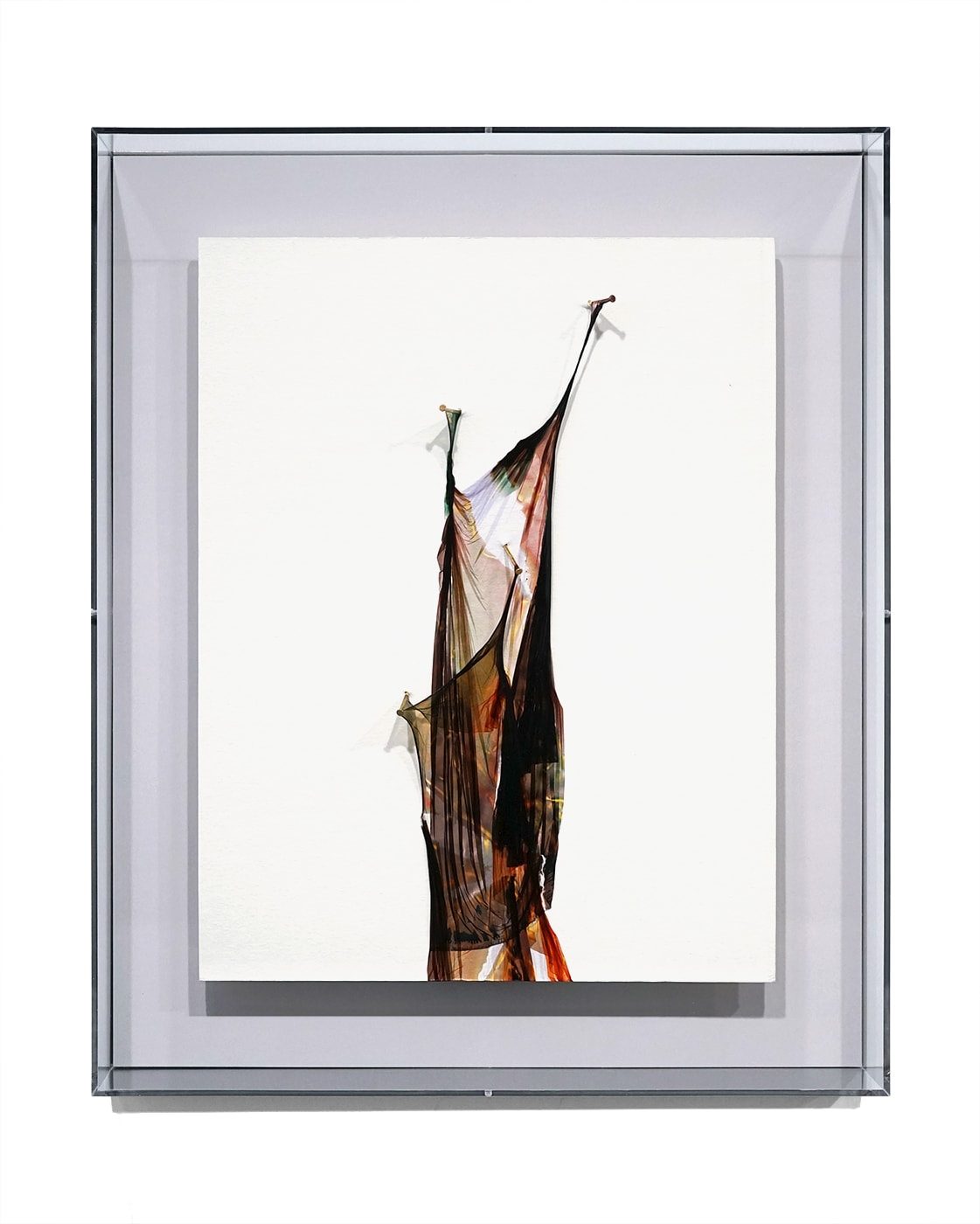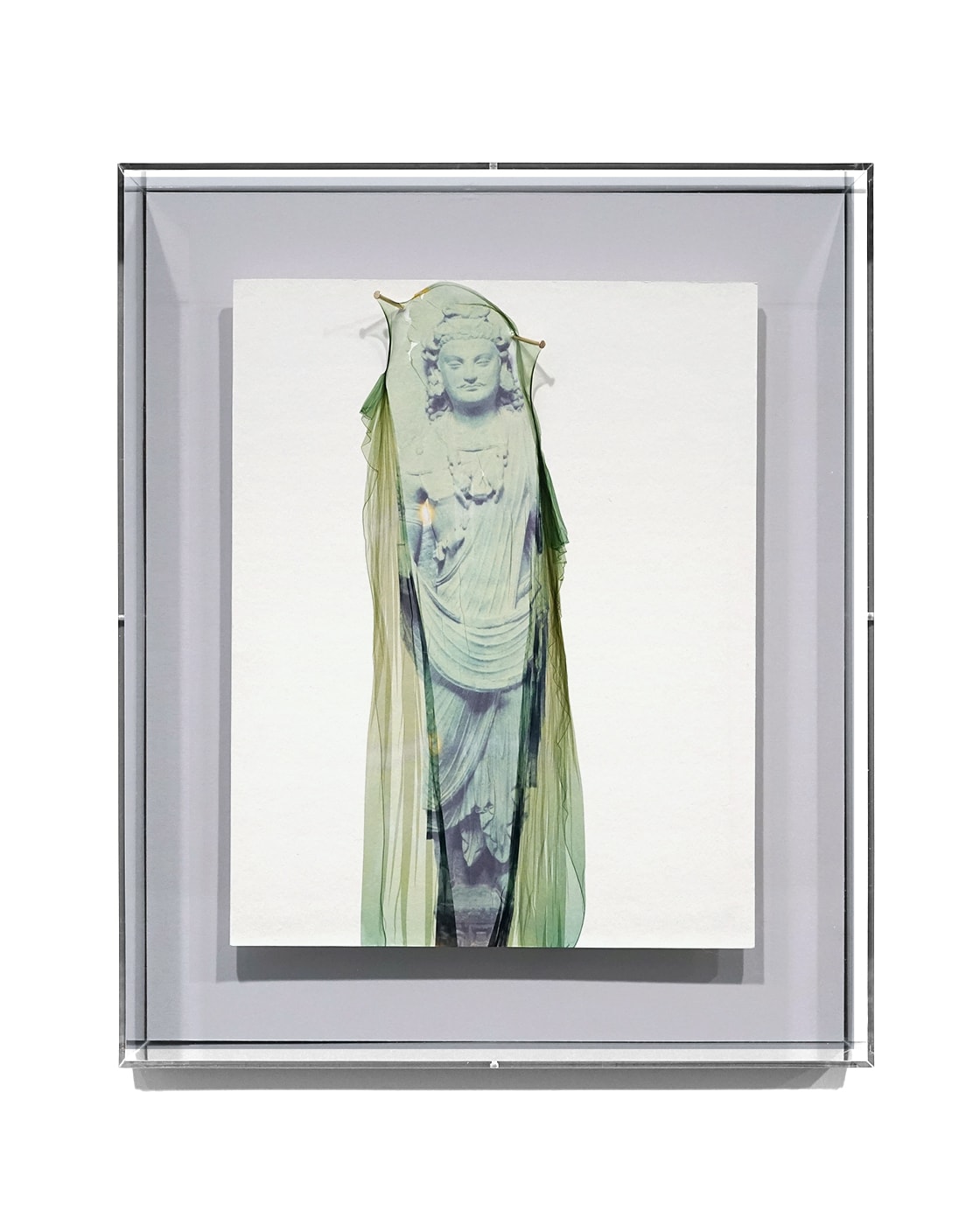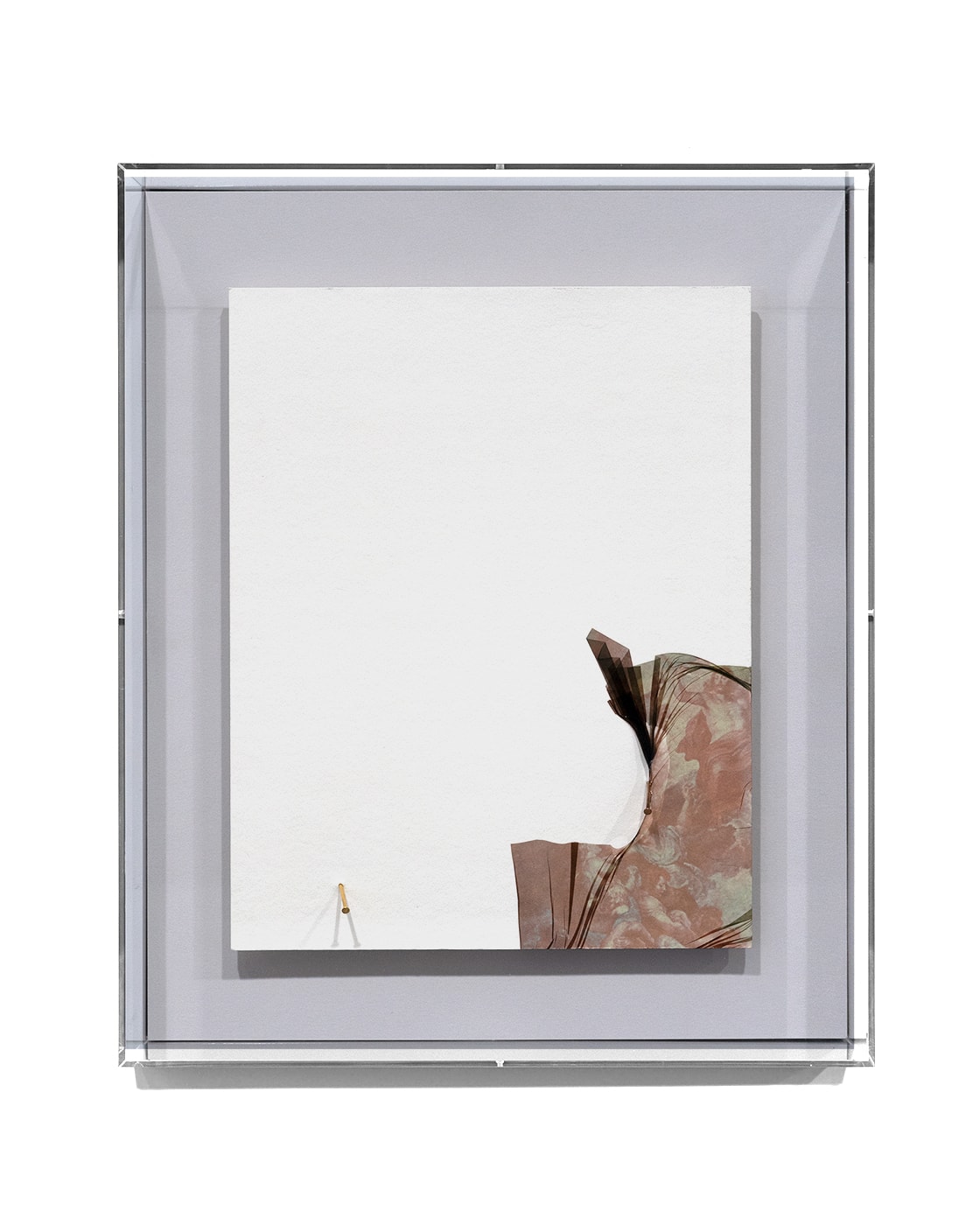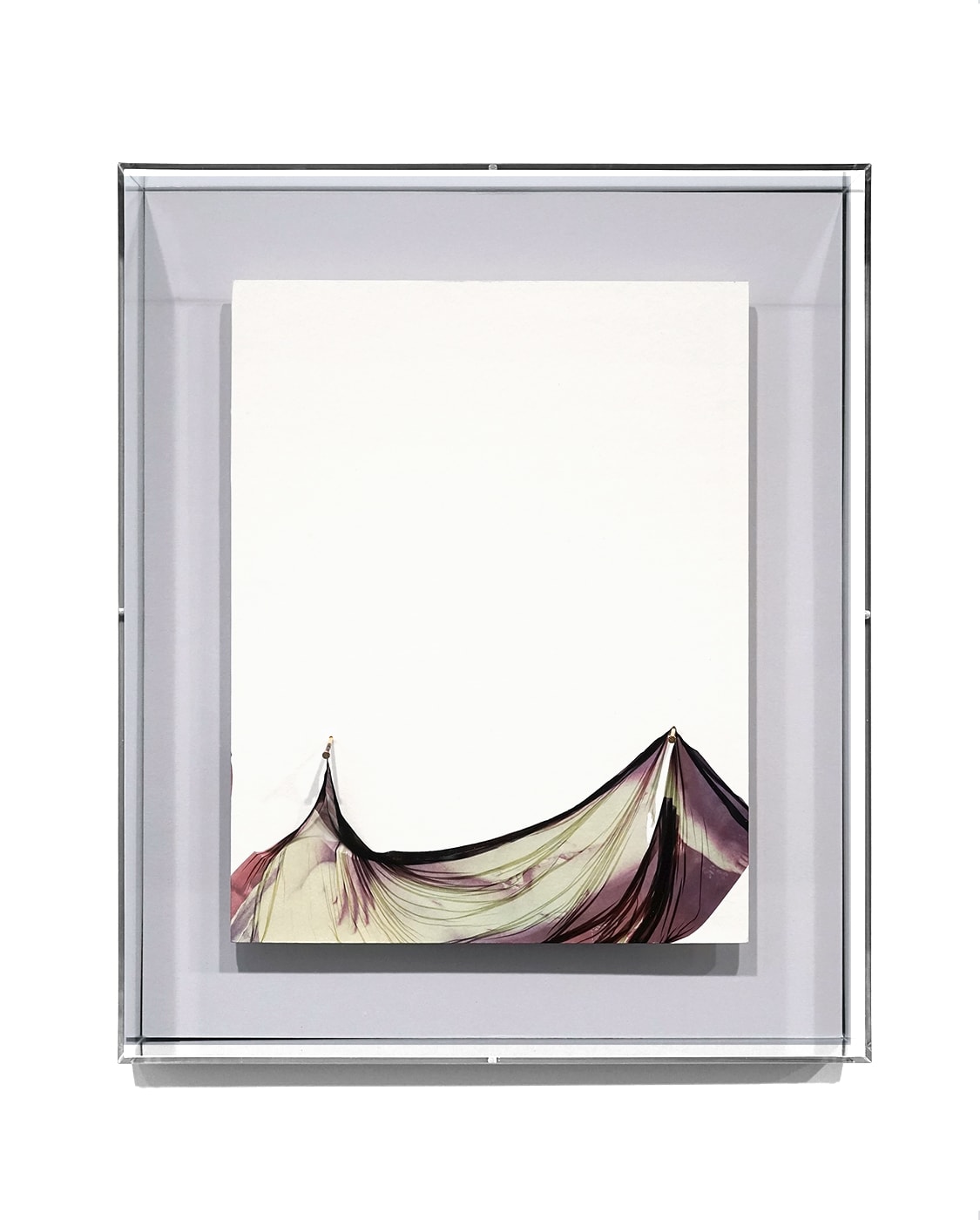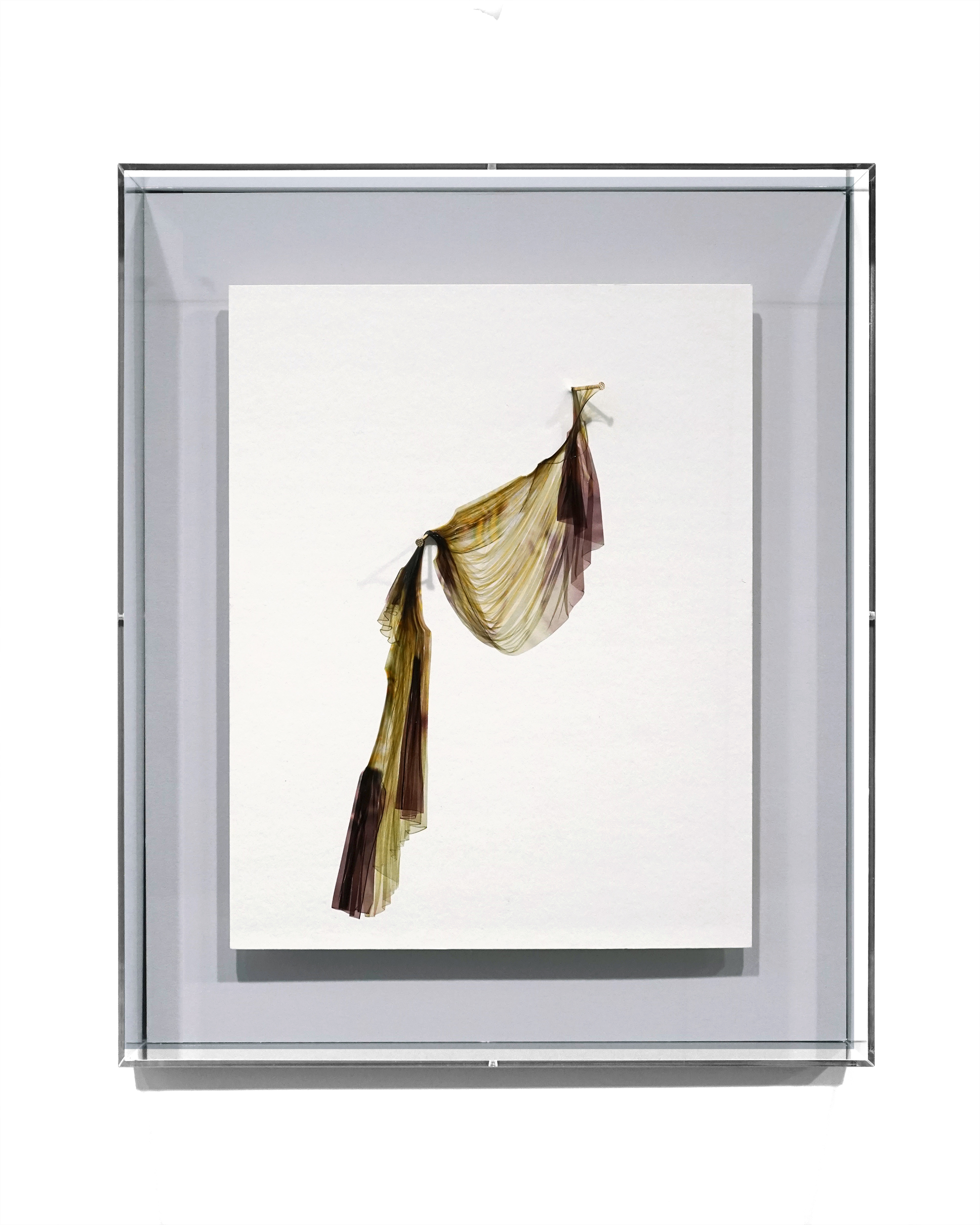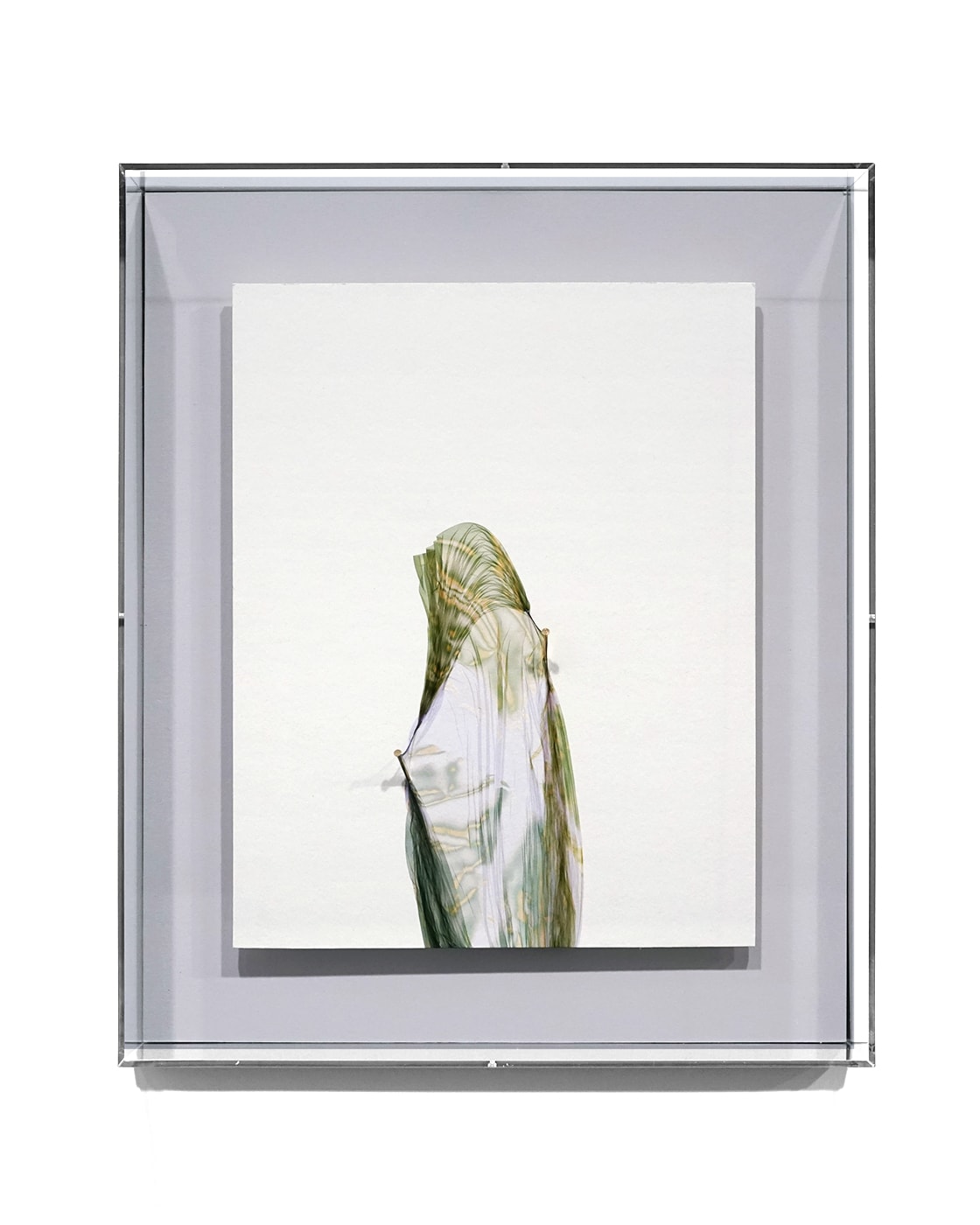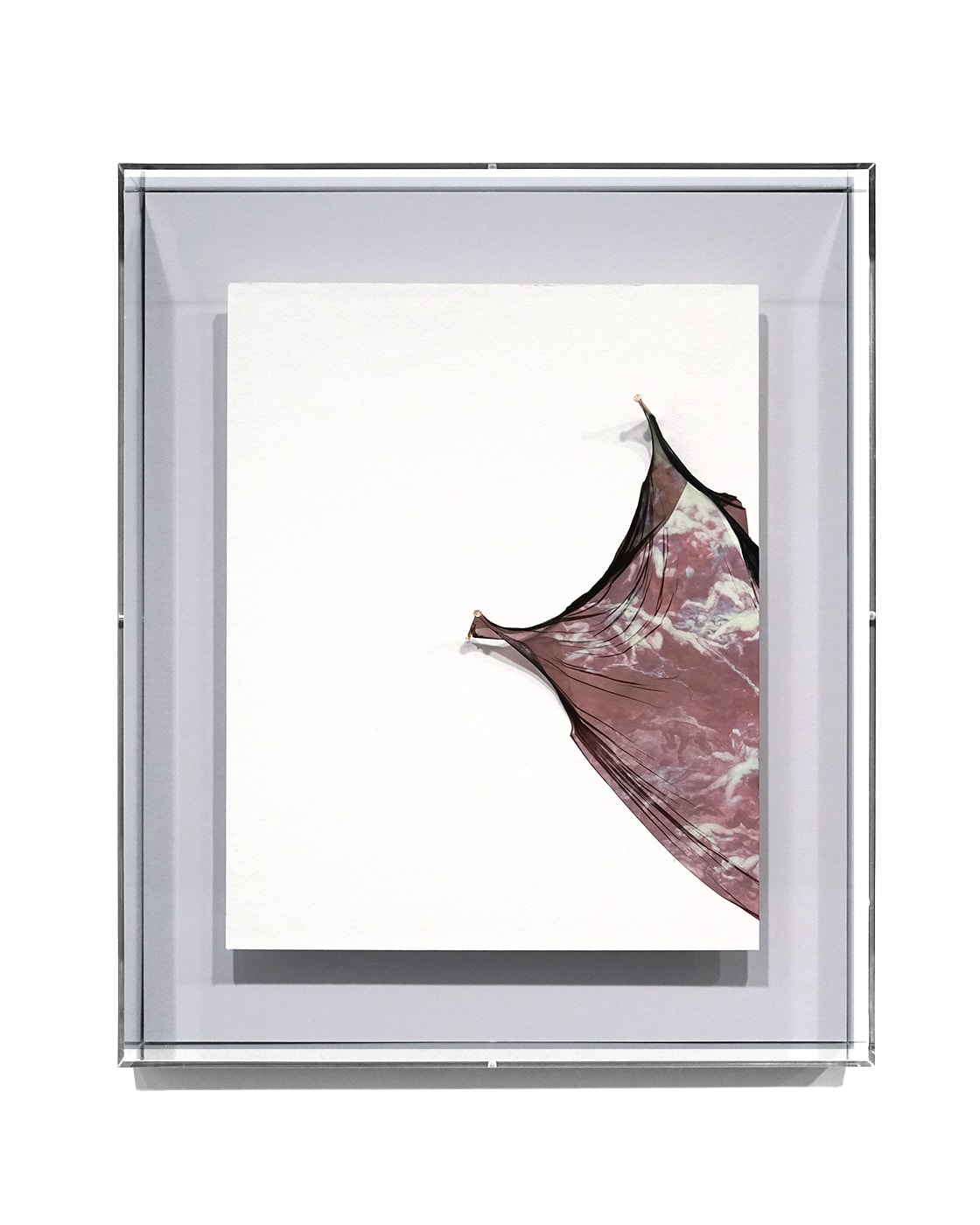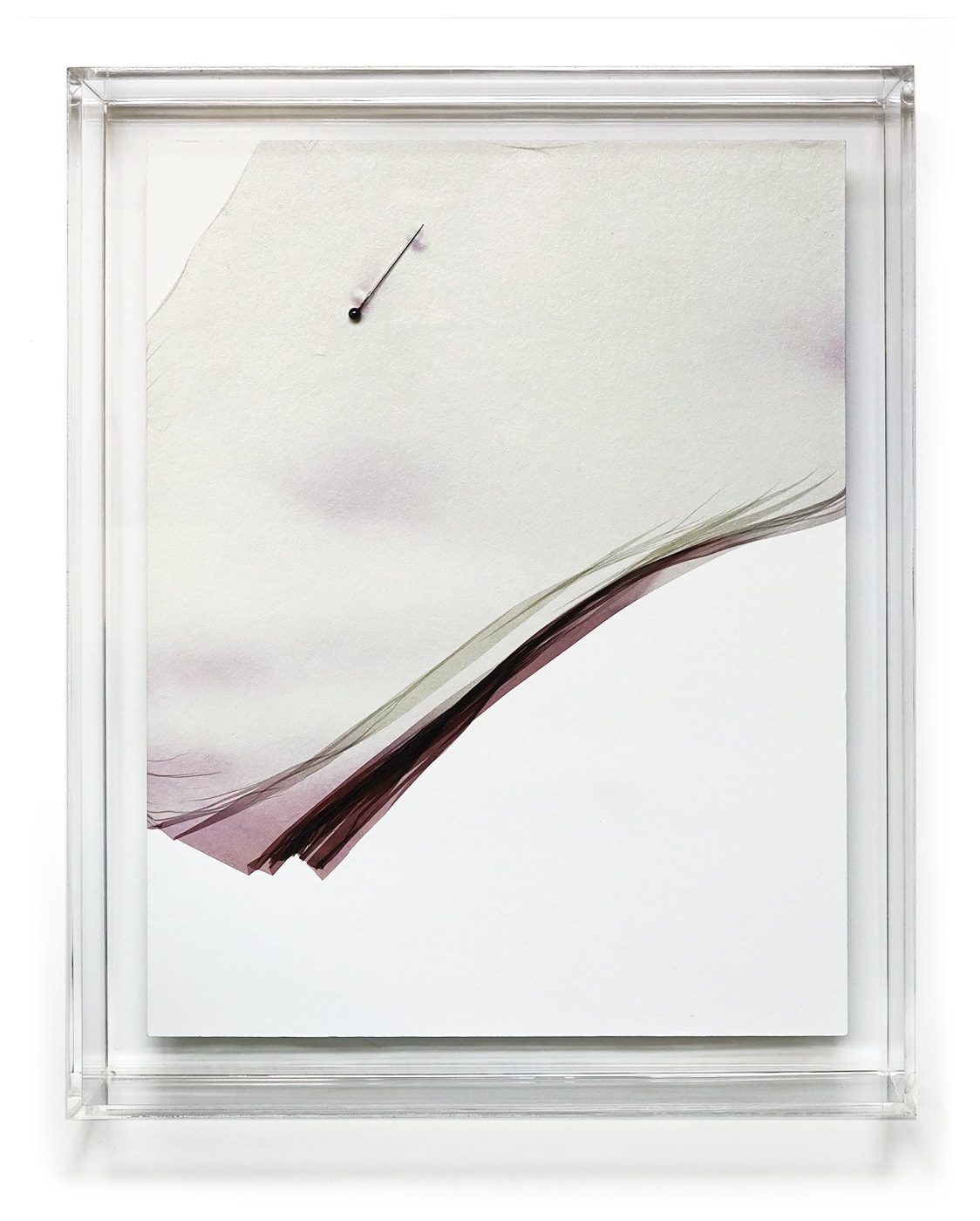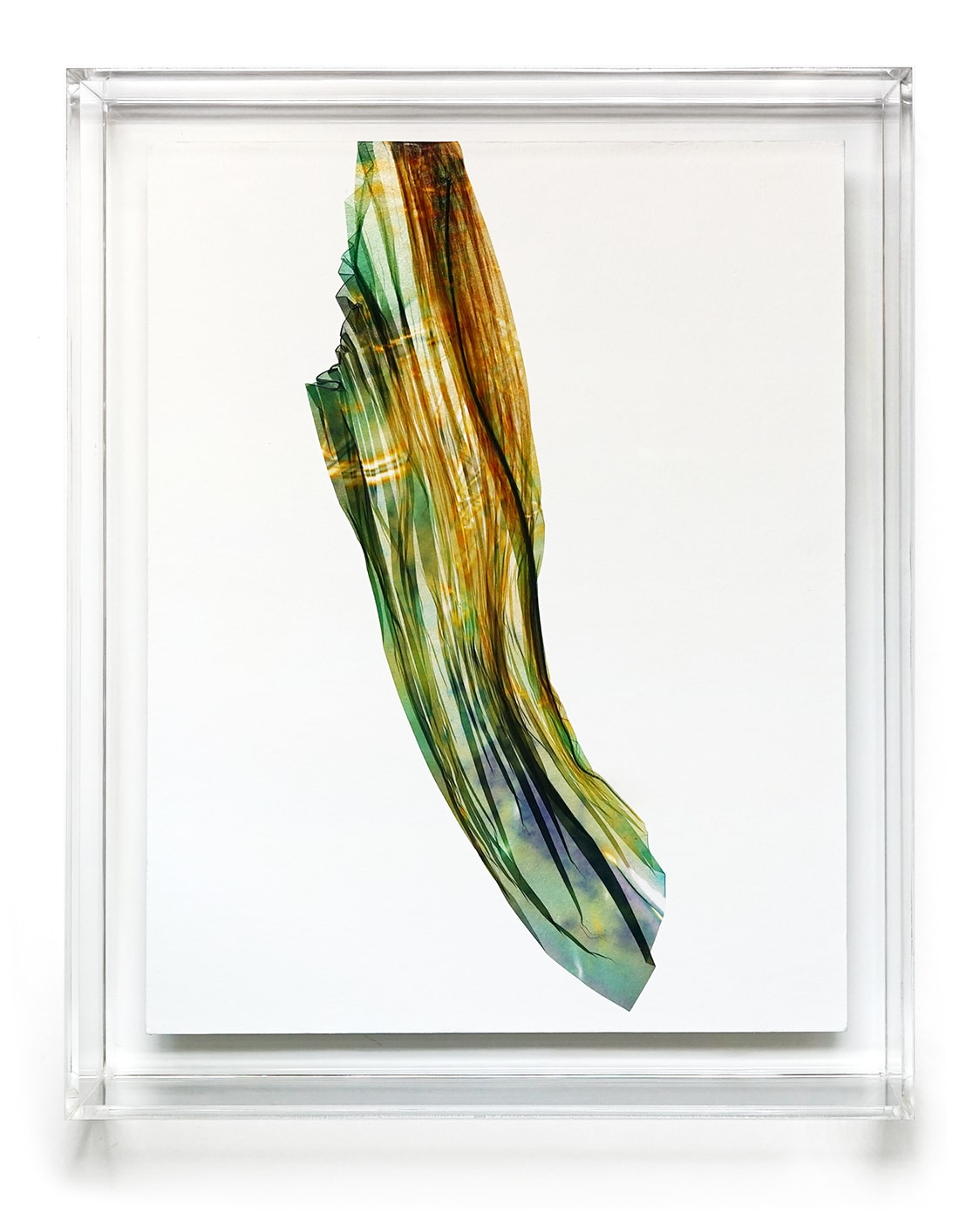Sun! Sun! is Jiang Pengyi’s fifth solo exhibition at Blindspot Gallery since 2010. This exhibition presents three recent photographic series by Jiang: his newest large-scale series Sun! Sun! (2018-2020), Foresight (2017-2018), and emulsion lift series Medium (2017-2018). Extreme conditions materialize into fixed photographic images – the brightest burn of sunlight, the bacterial craters in the dark side of the moon, and the spiritual ecstasy of contact. Jiang’s solo exhibition testifies to the pre-human desire to create images, narrating a history of photography that exists before human intervention and stretches beyond technological innovation.
Following through Jiang’s committed experimentation with analogue processes in photographic materials, these three series feature various exothermic, chemical and sculptural manipulation on negative and polaroid films. These myriad approaches in experimentation dates back to his pivot from the exteriority of digital photography to the interiority of cameraless photography, manifesting the creative thread from the darkroom manipulation of Dark Addiction (2013), Intimacy (2014), In Some Time (2015-2016), The Sun Matched with the Sea (2017), and Dissolution (2017). Jiang’s analogue work recalls Jeff Wall’s seminal essay Photography and Liquid Intelligence (1989), where Wall sketches the uneasy tension between the wet movement of nature and the dry optical mechanics of photography.
In Sun! Sun!, Jiang Pengyi harnesses nuclear forces in a balance of uncontrollable combustion and meticulous experimentation. The artist uses a magnifier to focus diffuse sunlight, creating flames that burn through a proprietary cardboard-contraption covering the opening of the light-sensitive film, creating fissures for incandescent exposure. The resulting images are multisensorial spectral arrays of burns, like scars on retina tissues, like afterimages when we stare at the sun for too long, the ghostly spectra that have long fascinated aesthetes, theoreticians and artists. Following the spectral theories of Goethe and Schopenhauer, Jiang belongs to a tribe of sun gazers, with an obsession for violent gesture and childish glee in conjuring fire magic.
Migrating to the dark side of the moon, Jiang creates the Foresight series in abject chthonic darkness, Icarus descending upon the underworld. The artist places refuse like fruits and vegetables on negatives and abandons the heap for organic processes to take its course. As times passes, fecund bacteria and fungi colonize, decompose, and release bioluminescent pigment, a microorganic ink painting by other means. These underground activities create psychedelic images and unknowable patterns freed from human agency. Harking back to the uncontrollability of traditional film photography, the resulting image remains a mystery till the final moment of reveal and fixing. The title Foresight is thus a misnomer, for the series is founded on the utter failure to foresee a certain future, an ecological indictment for consumerist excesses, blind leading the blind.
For a medium commutes us between the earthly existence and celestial transcendence. Not all is cameraless, and in Medium, Jiang uses instant films to capture found images of Christian and Buddhist art, and then manipulates the work with an emulsion lift, draping them to create unique objects that blur the line between photography and sculpture. Recall the Holy of Holies in the temple of Jerusalem, the ecstasy of Saint Teresa’s[1], and the martyrdom of Saint Sebastian. The artist likens the intimate and private contact between the deity-photographer and the receptive-film in the dark room as the eroticism between lovers, or the spiritual experience between human and a higher being. In Jiang’s deconstructive gestures, not only does the artist reference the history of aniconism and iconoclasm in major world religions and political regimes, he testifies to the irresistible urge of human beings to create and gaze upon images.
[1] I saw in his hand a long spear of gold, and at the iron’s point there seemed to be a little fire. He appeared to me to be thrusting it at times into my heart, and to pierce my very entrails; when he drew it out, he seemed to draw them out also, and to leave me all on fire with a great love of God. The pain was so great, that it made me moan; and yet so surpassing was the sweetness of this excessive pain, that I could not wish to be rid of it.
– The Life of Teresa of Jesus (1515–1582)


)
